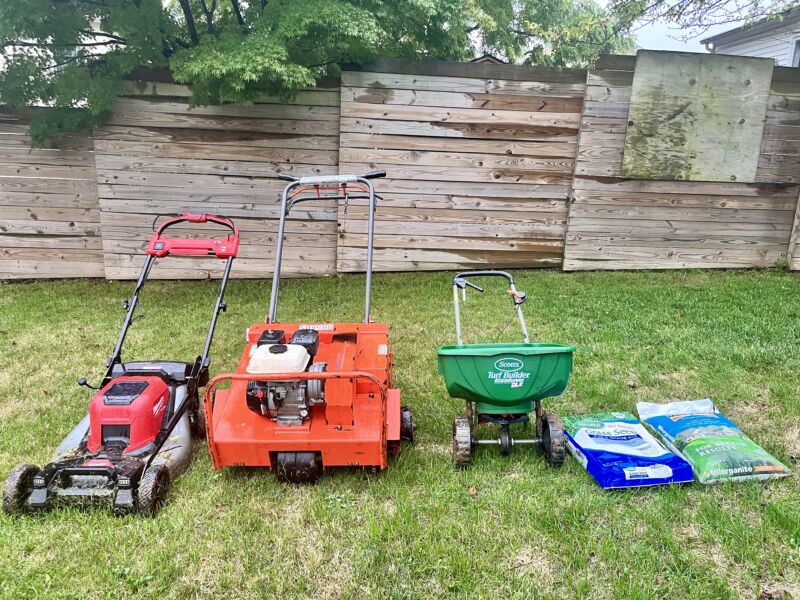

Trying to battle and win the war to remove and kill weeds can feel like an endless struggle. Even if we stay on top of weeding the garden and lawn, it feels like we are constantly pulling them out of the ground. After throwing weeds in the compost, it feels like they reappear overnight. While often, they reappear in the same location, they also pop up in unexpected locations around the yard.
Many gardeners will go to extreme lengths to get rid of weeds. Some plant cultivars that outcompete unwanted plants on their home turf, stopping them from growing. Others will smother their beds with unnatural herbicide–that we don’t recommend–in the hope of getting rid of any weeds that keep popping and sprouting up through the ground. Remember, weeds aren’t just unsightly; they also compete with the plants already in your garden for water, sunlight, and nutrients. If you let weeds grow uncontrolled, they can outcompete many of the plants we are trying to nurture, killing them off entirely.
Unfortunately, many people don’t know how to deal with weeds effectively. Gardeners often believe they are on the right track, even when they might just be causing more problems in their yard..
So what, exactly, do you need to do to win the war on weeds in your garden? Let’s take a look at some of the ways you can personally start winning the war on weeds in your outdoor areas and achieve the victory you want.
Here are some strategies and tactics you can use on most any sized plot:
Identify Your Weeds
While a big thistle growing up between the daffodils is completely obvious, the presence of some other weeds isn’t so clear-cut. Many can look quite attractive, or hide their weediness by blending into the surrounding plants in the bed.
You’ll also notice that some weeds are different from others. A few grow year-round, but many also sprout up seasonally, spread their seeds, and then disappear again before you’ve had time to rip them out.
You should also be wary of so-called invasive weeds. These grow uncontrollably under the right conditions, choking off various other plants in the process, stopping them from growing unfettered.
Having a list of the weeds in your garden makes it easier to know what you’re up against. You can then research each plant, find out why it is present, and what you need to do to get rid of it. We’ve used apps like PictureThis to help identify plants and weeds, which is very helpful.
Work On Prevention
Once you have a clear idea of the types of weeds growing in your garden, the next step is to work on prevention. If you can stop weeds from coming up in the first place, that will make your job significantly easier.
It turns out there are several ways to do this. The most obvious is to cover bare soil with ground cover mats. This practice prevents airborne seeds from weeds traveling to the site and starting to grow.
You can also practice planting densely and including many different species next to each other. Creating a balanced plant ecosystem generates an equilibrium that wild plants find hard to disrupt. Density makes it difficult for them to get a foothold, stopping them from springing up in large numbers.
Finally, you might also want to try mulching your garden beds, especially around trees. Mulch looks natural, but it is also an excellent way to prevent seedlings and saplings from erupting through the soil. The soil underneath retains its moisture and nutrient density better, creating conditions that are preferential for mature plants and shrubs.

Remove Your Weeds
In some cases, prevention won’t work. Despite your best efforts, the green shoots of plants you don’t want can still peep through the soil.
That’s where removing them comes into play. It turns out there are several ways to do this.
The most obvious is hand-pulling. Here, you grab hold of the head of the weed and pull it out of the ground.
This strategy is most effective when weeds are young and their roots haven’t had enough time to weave their way into the soil and create a sturdy base. Whenever you remove a weed, make sure you pull the whole plant out of the ground and place it on your compost heap. Don’t lead the roots in the soil as they will remain active and can lead to the plant regrowing all over again, doubling your workload.
Some weeds are better at growing from root fragments than others. While pulling may work for a few weeds, it won’t be enough to get rid of many others.
If hand pulling isn’t appropriate for the types of weeds in your garden, you can also try digging them out. This approach requires more work, but it increases the likelihood of eliminating all root fragments.
Cutting or moving is another option. This approach can be beneficial for fast-growing weeds or those with tough stems and roots that you can’t easily pull out of the ground.
MasterScapes Lawn Care and Landscaping does something similar to this, as do many professionals. The idea is to pay seasonal visits to your garden to promote turf and plant growth while evaluating the weed situation and taking appropriate action. Most people who control weeds for a living adopt an ad hoc approach that involves assessing the situation and then taking appropriate action, depending on the findings.
For instance, many professionals believe in the power of herbicides, chemicals that prevent or inhibit the growth of plants. Historically, these compounds were generic and affected all plants in the garden, but today, they are more targeting, meaning you can kill one plant at a time, without damaging others that surround it. Some weed killers are so advanced that all you need to do is touch the plant briefly with an applicator and it will die a few hours later.
Most herbicides are artificial, and we don’t recommend those. However, there are some natural varieties you can use if you are worried about introducing synthetic chemicals to your garden. Some natural weed killers like vodka and other acidic substances like lemon juice can also kill weeds.
You can also get herbicides formulated to deal with weeds at different stages in their lifecycle. Some are suitable for use before weeds even emerge from the ground, preventing them from sprouting when the season comes around.
If you decide to apply herbicides, wear protective gear. Some formulations can cause neurological issues and irritation. Wear gloves and a mask before application, and never apply near pets or kids.

Tilling
Another good way to treat weeds is to use cultivation or tilling. This process involves raking over the soil and disturbing it so that it is not so compact. Then, you simply plant whatever plants you want to grow.
This practice is excellent for aerating the soil and helping to get more oxygen into it. You can use a simple fork, rake, hoe, or tiller – basically whatever tools you have available. You don’t need to penetrate the ground super deeply unless you live in a high clay area. Going too low can actually inhibit the growth of plants you want and decrease soil quality over time by increasing nutrient run-off.
Cultivating also reveals the root structures under the soil, letting you remove them. You can usually see the start of weeds and can deal with them quickly before they become entrenched or start sprouting up.

Focus On Control
In some extreme situations, killing all the weeds in your garden isn’t possible. In these situations, professionals often adopt the policy of control. The idea isn’t to eliminate weeds completely but, instead, to do things that increase the likelihood of them dying back.
Smother Them
Finally, you might want to try smothering your weeds by depriving them of the things they need, like sunlight and air. The best tactic is to get some thick cardboard that won’t allow the light to penetrate and hold it down with some bricks. This way, weeds will die out and you can use the soil for the plants you want afterward.
About the Author



